Tracking Through Drive - America vs. Canada
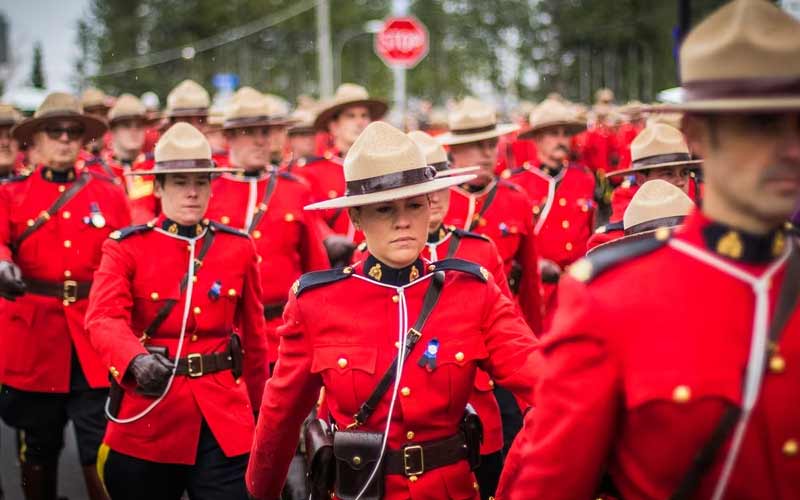
There are some points on "Tracking Through Drive" training for service dogs that the RCMP uses that will not work in the States. People have mentioned that it takes a special dog. This is very true, it does. The RCMP have a difficult time selection testing dogs. They look for dogs with strong prey drive and good nerves. They also have to have a dog with a defensive drive that can be naturally balanced with prey. From those they finally select, they wash 50% out. So this is not an easy thing to define because even half the time, the pros make a mistake.
This would not be done here in America. What canine supervisor is smart enough or has the authority to wash a dog out of training (after 4 or 5 weeks) because the dog had 4 days of not wanting to track? Maybe I should say, "What agency has enough money to allow this to happen?" Maybe the federal government can afford these practices. More and more, I am beginning to feel that the FBI or some other federal agency needs to set up a training facility like the Police Dog Training Center in Alberta. Up there, the federal government funds these RCMP dogs while cities and municipalities have their own programs (although few of these have the standards of the RCMP).
Anyway, what happens in Canada is if a dog has 4 or 5 days where he will not follow a country track and they are certain that he is not sick, then they will drop the dog from the program. If the dog does not have the drive to do this work, they give him away as a pet and start with a new dog. We just can't do that down here, but this is also what makes the RCMP canine program what it is.
I have had extensive conversations with the instructors up there about food tracking, Schutzhund tracking, or foot step tracking. All of the instructors have over 10 years of street K-9 experience in addition to years of instructor experience at the school in Alberta. These guys don't argue theory, they explain reality. Their explanations come from experience. Every instructor agrees: you can't do both foot step tracking and tracking through drive. You cannot foot step track a dog through Sch III (or OPI III or DPO III) and at the same time, expect the dog to track through drive in police work. This is especially true if a dog has had any force in the track. (By the way, anyone that force tracks a service dog is on a one-way road to failure on the street).
If a handler feels that his dog needs force to get over a hump, we have two things happening. First, we have the wrong handler/trainer. Second, we have the wrong dog. If you are a new trainer and you have a sport person telling you to consider forcing a dog through a problem, forget the help. You don't need this kind of advice.
The association that the dog needs to track has to be the knowledge that there is a human at the end of every track and not food. If a dog has drive and the training is started right, he will track 500- to 600-yard straight-leg human tracks the first day. There is no place in track training for food on a service dog. Sport dogs and DPO dogs are a different story. But if your goal is to get a dog that can track 5- to 8-mile tracks in the country, it will never be a food-trained dog. The only dog that will ever do this is a dog that's doing it with his heart, not his stomach.
I laugh with people or at people on this topic. I ask how many pounds of food do you put on an 8-mile track? I am thinking maybe 20 or 30 pounds would do a reasonable job.
If a trainer wants to play with puppies and use food to scent-associate up to a year of age, that can't hurt. If you slow the dog to make sure he finds food, that hurts.
When I explain "tracking through drive", it goes like this: this is a method of tracking where the supposition is that the dog is going to lose the track because of the speed. We expect him to overshoot corners. The training comes in at "teaching the negatives". Reading the negative is the key to a handler. A negative is when my dog gives a track loss. Some dogs lift their head. Some just give a slight head turn (you learn your dog negative on known track, so you know where the turn is and read the response of your dog). You have to be a good enough handler to read the negative on the unknown track or you are lost.
The goal of the negative training is to make a dog give you the negative within 20 feet of the turn. When the dog does this, there is little time lost on reacquiring the track. This is a key point of training.
So if you expect a track loss when you start tracking, and you expect a negative within 20-30 feet of the turn, you are going to catch people.
What I say to the old naysayers is this isn't theory. This is simply the only way to track a service dog. This goes on every day all over Canada.
There is also a group of people who say that this is nothing new. They say that S&R (SAR, or Search and Rescue) people have been training trailing dogs for years. It's easy to be flippant. But I talk to a lot of S&R people. I have never found one who has tracking down to a science that the Canadians have.
Getting out and following a trail with speed is 5% of what this system is all about. Just because S&R people run, trails does not mean they are using this training. If they all did, there would be a lot more people found and more S&R organizations would have better reputations than they now do. Don't get me wrong. Not all are bad, but many hang their shingle out and call themselves experts and S&R after one or two seminars. I am sorry but this is wrong.
In Canada, the S&R cannot be called out unless they are certified on Level 1 RCMP tracks by the RCMP. I would hazard a guess that 75% or more of the dogs in America would never be allowed to work in Canada. So we don't want to be using these people (the 75% anyway) as our authority figures.
There are some groups in this country that are diligent trainers. They do a fantastic job at S&R. They have serious training standards and let their records speak for themselves. Those are the people novice trainers need to listen to. It's the old story. To hell with theoretical arguments. Put your dog's abilities where your mouth is. That's what the RCMP does. That's what makes them so great.
The bloodhound people are another group that make all of these crazy claims about their dog's abilities. I've seen people claim their dogs being able to follow a scent down roadways for 7 miles when the suspect was inside a car and the track is 24 hours old. Give me a break. These claims are asinine. I would be embarrassed if someone I train with ever made a claim like that. The most common claim is, "This track is too fresh for a bloodhound. We need to wait 3 or 4 hours for it to age so the bloodhound can follow it." Sounds like a training problem to me.
The big difference in how the RCMP train and everyone else is in the small details, not the main concept. It's the small details in training and tactics that make the difference between success and failure between catching the suspect and not finding them. It's worse when you come up with excuses because the dog couldn't do the job today. I can write a book on excuses. I used a lot of them before I learned how to train tracking dogs.
There have also been a few comments on article identification in tracking. If the well-trained dog can smell the article, he will come back to it. Never forget the main goal. That is to catch the bad guy, not to find articles. If the dog finds evidence along the track, that's great. That's why we train for it. But if he blows by evidence, the K-9 officer should always try and backtrack after a suspect has been found (assuming the time and manpower will allow it). This is what the RCMP recommends and I have done it a number of times. It works. Many times, the dog will get the article on the way back. They learn very quickly what is expected.
The American police that don't have the skill to train tracking through drive, or that don't have the dogs that are capable of learning this method, are forced to become area search dogs or foot step trackers. But remember, foot step trackers only catch 3-4% of those suspects they go after. The RCMP catch 50% of all the people they go after. How can anyone argue these numbers?
I was talking to a friend last week (an RCMP handler). They have found that the longer a dog spends tracking in the sterile environment of the country (before being moved to the urban-suburban areas of level II III (where there are more distractions), the better the lifelong success of that dog. It's in Level II III where the distractions are added. So in a nutshell, this means the dogs learn to track in level I. If the dog is rushed through this country training, it never becomes as good of a tracker as it would have been had it stayed in the country a little longer. The RCMP like to train at least 60 tracks in the country.
Big city police handlers fall on their face when they think "I work in the city, so why spend all this time in the country tracking?” In reality, these guys have the most difficult tracking conditions and therefore should spend the most time in the country training.
The long and short of the entire thing is that anyone that is in S&R or police service dog training should be doing tracking through drive if their dog has the talent to do it. Don't ask me how to select the dogs that have this talent because even I can't do it.
If you want to read other articles on this, read Tracking Through Drive vs. Foot Step Tracking. If you want to learn to do this training, buy these videos:
- Training Police Tracking Dogs - Level I - with the RCMP
- Training Police Tracking Dogs - Level II III - with the RCMP
- Training Track Laying for Police Service Dogs - with the RCMP


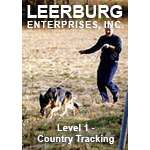
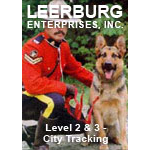
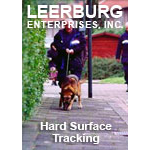
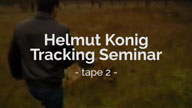

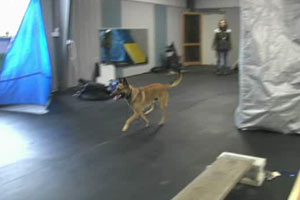
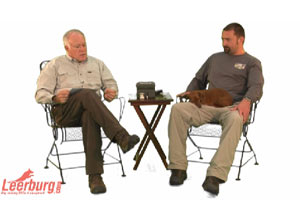
1 Comments
Ask Cindy
Sorry, adding comments is currently disabled.